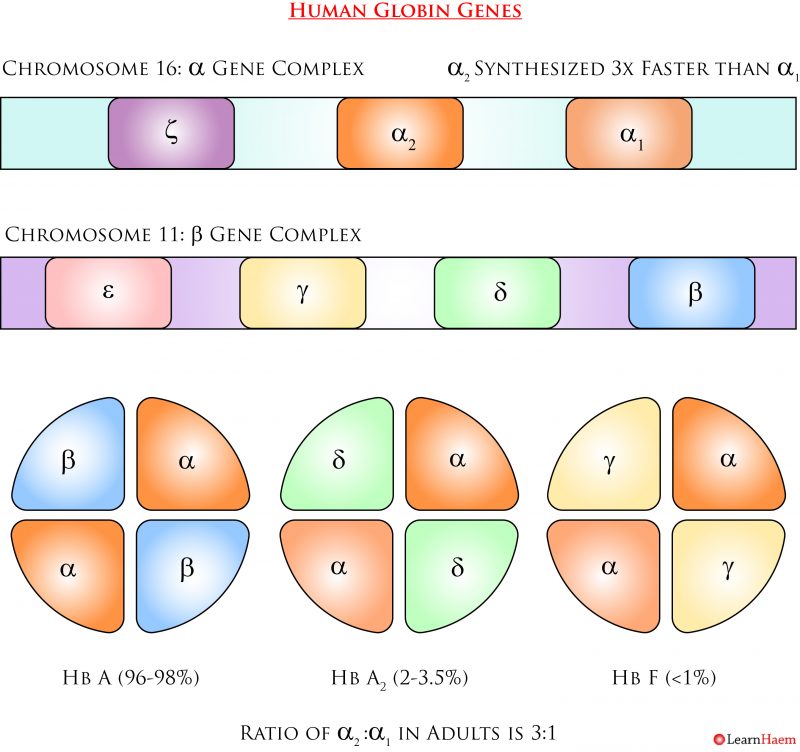
The Structure of Haemoglobin. Haemoglobin is made up of four different chains. One pair originates from genes located on chromosome 16, while the other originates from genes located on chromosome 11. Credit: Zephyris at the English language Wikipedia [GFDL or CC-BY-SA-3.0]
The different haemoglobins are formed by pairing two sets of globin chains to make a haemoglobin molecule comprising four different chains. The structure of haemoglobin is shown above. The types and quantities of the various haemoglobins change with age. This is because embryonic and fetal haemoglobin requires a higher oxygen affinity to be able to extract oxygen from the placenta. The table below shows the composition of the different haemoglobins in humans.

Haemoglobin Composition and Normal Ranges in Adults. Each haemoglobin molecule is made up of 2 pairs of chains. Each pair of chains originates from a set of globin genes on chromosomes 16 and 11.

Normal Adult Haemoglobins. Each individual normally has 4 α genes and 2 ß genes. Hb A (α2ß2) is the major adult haemoglobin. Hb A2 (α2δ2) and Hb F (α2γ2) are minor adult haemoglobins in the normal, healthy state.

Types of Circulating Haemoglobin. In embryonic life, the major haemoglobins are Hb-Gower and Hb-Portland. These are rapidly replaced by fetal haemoglobin, HbF. HbF levels decline in the third trimester, and fall to very low levels quickly after birth. HbA is the major adult haemoglobin. Production of HbA ramps up in the third trimester, reaching a peak at about 6-12 months of age. HbA2 is a minor haemoglobin comprising two alpha and two delta chains. The normal range of HbA2 is approximately 2-3.5%.


Leave A Comment